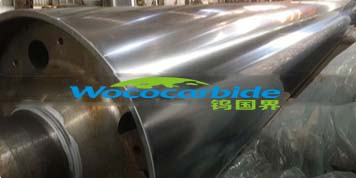

Thermal spraying technology is an important part of surface engineering in the field of material science. It is a technology of surface strengthening and surface modification. By spraying a coating on the surface of the metal substrate, the metal has wear resistance, corrosion resistance and high temperature resistance. Oxidation, electrical insulation, heat insulation, radiation protection, wear reduction and sealing properties. Thermal spraying technology is mainly used for pre-protection of high-temperature, wear-resistant, corrosion-resistant components, preparation of functional coatings, and repair of failed components.

The widely used thermal spraying techniques include flame spraying, arc spraying, plasma spraying, explosive spraying and supersonic spraying. The flame spraying is realized by a flame spray gun. The spray gun introduces acetylene, oxygen or compressed air respectively through the air valve. After the acetylene and oxygen are mixed, a combustion flame is generated at the nozzle outlet. The introduced powder or rod coating material is heated and melted in the flame. , under the action of the flame, the mist-like droplets are formed and sprayed onto the surface of the substrate to form a coating. The two wire-shaped material coating materials used in arc spraying are automatically introduced by the wire feeder. When a large current is passed between the two wire-shaped materials, an arc will be generated, and the wire-shaped material will be rapidly melted under the high temperature of the arc, and compressed The air acts as small droplets that are sprayed onto the surface of the substrate to form a coating. Plasma spraying is suitable for powder coating materials. The plasma spray gun converts electrical energy into heat energy to generate high-temperature and high-speed plasma flame. Explosive spraying is to use the energy provided by the ignition and explosion of the mixture of combustible gas and oxygen to spray powder onto the surface of the substrate to form a coating. The supersonic flame spraying method has improved the bonding strength, hardness, compactness and wear resistance of the coating due to its high particle impact speed.
Most ceramic materials have ionic bond or covalent bond structure, high bond energy, strong interatomic bonding force, and low surface free energy, which endow ceramic materials with high melting point, high stiffness, high chemical stability, high insulation and thermal insulation ability, thermal expansion However, compared with metal materials, its plastic deformation ability is poor, and it is sensitive to stress concentration and cracks. Obviously, using ceramics as a mechanical structural material has poorer reliability than metal materials, is difficult to machine, and has a high cost. However, the use of thermal spraying technology to prepare ceramic coatings on metal substrates can organically combine the characteristics of metal materials and ceramic materials to obtain composite material structures. Due to the extremely superior comprehensive properties of this composite material structure, thermal spraying technology has rapidly expanded from high-end fields to civil industries such as energy, transportation, metallurgy, light textiles, petrochemicals, and machinery.
Hot information

